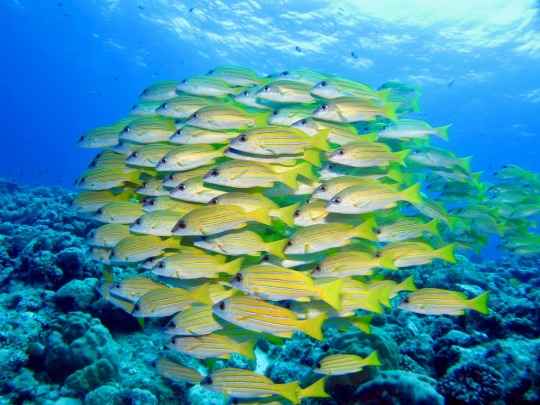#reef fishing
Note
i love you aroallo people i love you pan people i love you bi people i love you nonbinary people i love you lesbians i love you trans women i love you intersex people i love you everyone in every body or identity with discourse surrounding if you should exist or not i love you so much i love you i love you i love you. you are so so loved i promise you
a very tired but hopeful trans lesbian 🙏
String identified:
aa a a a ta t tt t c g t t c . a
a t t ta a 🙏
Closest match: Sepioteuthis lessoniana genome assembly, chromosome: 33
Common name: Bigfin Reef Squid
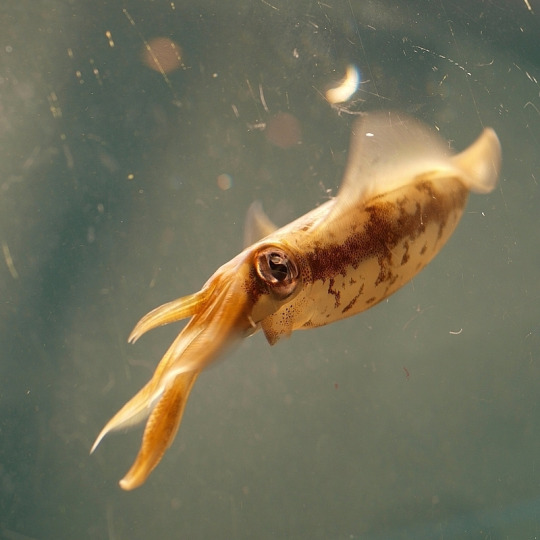
#tumblr genetics#genetics#asks#requests#sent to me#transgender#fish#ocean#squids#bigfin reef squid#things will get better anon#<3
5K notes
·
View notes
Text
Since Percy can talk to sea creatures, I'd like to think that one day he passed a pet shop with all these fish screaming at him in agony. Since then there has been a giant aquarium in cabin 3 with fish. He converses with them daily when he's at camp. He gave them all names (they were delighted to hear his suggestions).
There is one grumpy grouch that always tries to eat as much food before all the other fish. He has to keep him forcibly apart in a tiny water ball during dinner. He named him Zeus. Percy doesn't give a shit. Poseidon knows and thinks it is hilarious.
Chiron, who takes care of them when Percy's gone, cannot understand them but he doesn't like the way they look so judgemental. They are very much gossiping about him to his face.
#pjo tv show#pjo fandom#pjo series#percy jackson#percy jackon and the olympians#headcanon#i also like to think that wild creatures also want to have a name so when he's just chilling in the sea there are random fish coming to him#brutus the coral reef overlord#which is a guppy
7K notes
·
View notes
Text
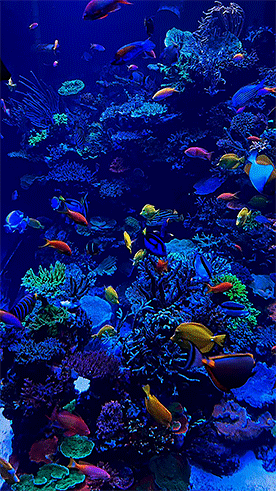

polo_reef on ig
#underwater#fish#stim#sensory#satisfying#mypost#mygifs#aquarium#reef#blue#royal blue#blacklight#coral reef#hands free#handsfree#tropical
11K notes
·
View notes
Text
the fact that I will never truly know what it’s like to be a shark in a shark cuddle pile is cruel and unusual punishment.


absolutely devastating.
#me with my mutuals#but fr that should be me!!! get me in there!!!#white tipped reef shark#sharks#cuddle pile#shark cuddle pile#cartilaginous fish#fish#marine biology#marine bio#marine biology memes#fish memes#there are many benefits to being a marine biologist#i love fish#bio#biology#biology meme#science#ocean lover#ocean#shark lover#fish lover#meme#love#friends#btw gang we’re at like. almost 900 followers. what#I know a good chunk of them are bots but. thank u! :.)#post
6K notes
·
View notes
Text
No time to talk, bitch. Get in the shark pile

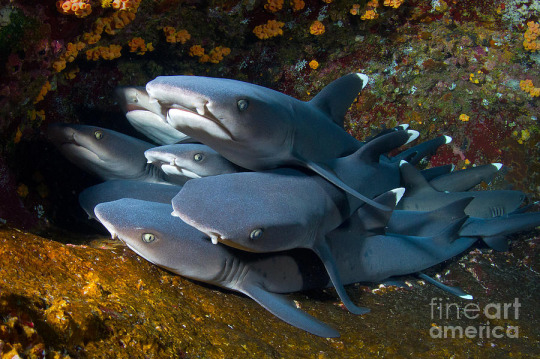
#whitetip reef shark#sharks#marine biology#aquarium#fish#shark pile#ocean#oceancore#ocean aesthetic#shark week#sea animals
52K notes
·
View notes
Text
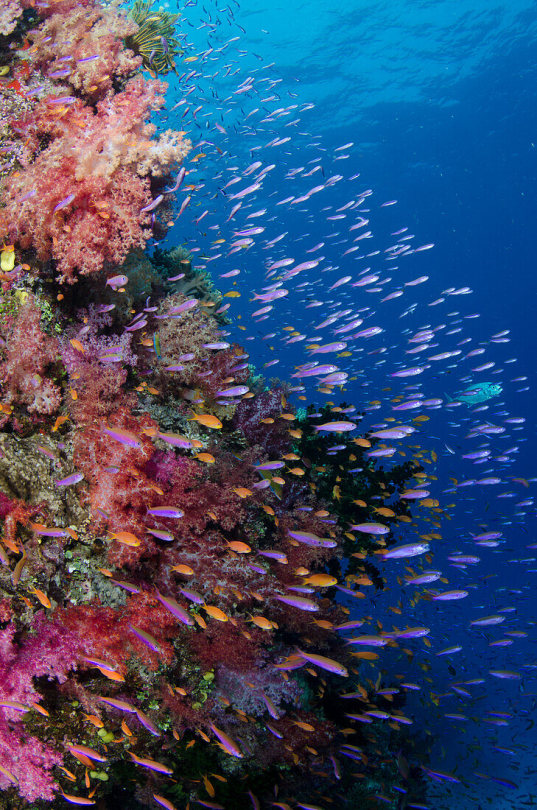

Fiji Reefscape
#fiji#reefs#coral reef#fish#pink#orange#purple#blue#water#ocean#sea#underwater#photography#nature#sea creatures#marine biology
4K notes
·
View notes
Text

Meet the Caribbean reef octopus (Octopus briareus)! This reef-inhabiting cephalopod lives in warm shallow waters, spanning southern Florida to the Caribbean, through to South America’s northern coast. It’s distinguished by its eye-catching blue coloring, but this master of disguise can change its looks in an instant. Like other octopuses, it uses pigmented cells in its skin, called chromatophores, to alter its appearance. When confronted by a foe, such as a shark, it may emit a cloud of unpleasant-tasting ink to deter its enemy from further pursuit.
Photo: francoislibert, CC BY-NC-SA 4.0, iNaturalist
#science#natural history#nature#animals#ocean life#octopus#fish#sea creatures#coral reef#did you know#fact of the day#animal facts#marine biology#cool animals#camouflage
856 notes
·
View notes
Text
Today on CHUNK! FUNK! GUNK! We rate
the MORAY EEL:

8/10 Chunk
10/10 Gunk
8/10 Funk
It’s been a long time coming, and anyone who’s been following this blog for any amount of time is well aware of my obsession with these funny wiggly boys.
Moray eels. My beloveds. Look at that girth, high chunk. The slime layer that makes it so that I cannot hug them without a proper wetsuit or fabric layer, absolute gunk. The big squishable cheeks, the weird sticky-out-y tube nostrils, the two mouths, incredibly funky.
Overall: 10/10
Everyone has a selfish dream of what they would do if they won the lottery. Mine is simple: buy a giant saltwater tank and fill it with 3 giant moray eels. (Preferably of different colors/patterns so I can tell them apart)
Everyone also has a dream of channeling their inner Disney Princess with a wild animal: I want to hug a moray eel.

It was my birthday on the 18th, so as a gift to myself, I rate my beloveds.
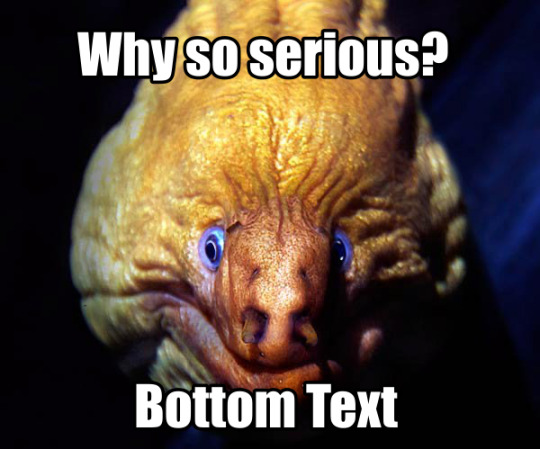

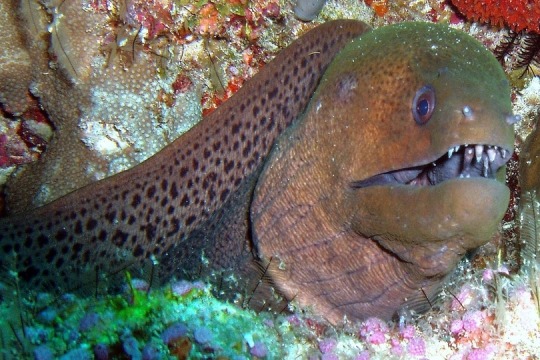
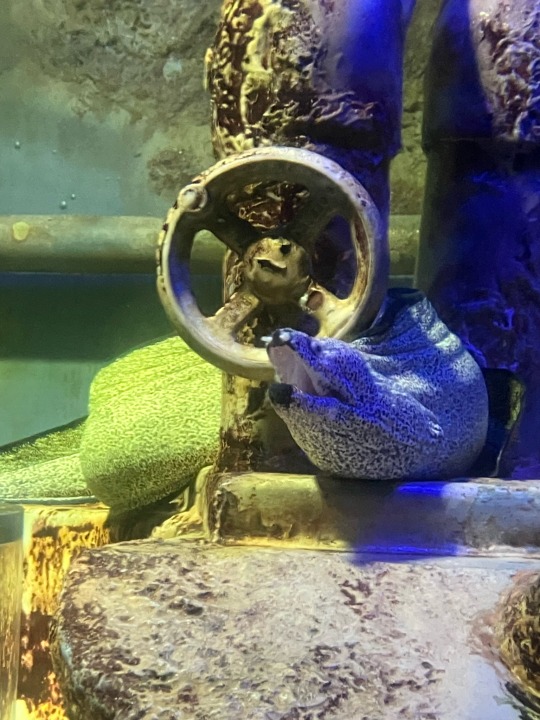
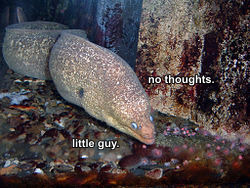


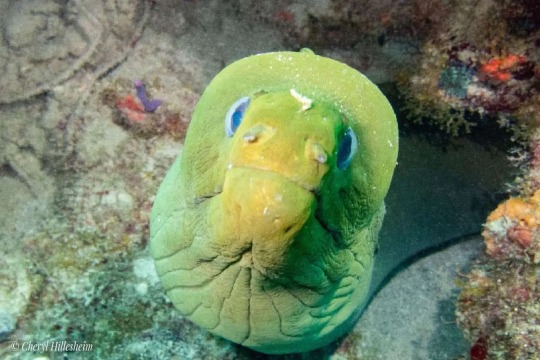
#chunk funk gunk#chunk#gunk#funk#moray eel#moray#green moray eel#eel#eels#ocean#ocean animals#cool fish#fish#ocean fish#reef fish#asks open#my beloved#chunky funky gunky boys
955 notes
·
View notes
Text

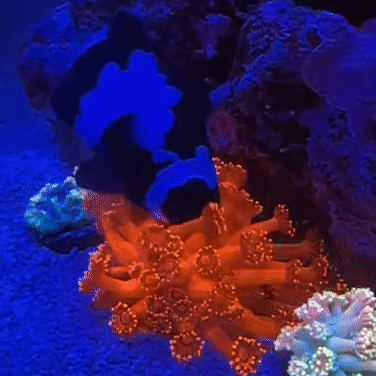







🌈🪸 ~ Ode to Goniopora Coral ~ 🪸🌈
❤️..🧡..💛||💚..💚..🩵||💙..💜..🩷
#stimboard#rainbow#neon#blacklight#black light#coral#coral reef#fish#oceancore#goniopora#rainbow stimboard#rainbow stim#neon stim#neoncore#stim#ocean#ocean stim#rainbowcore#coral reefs#marine animals#marine life#sea creatures#seacore#teal stim#coral stim#ocean coral#coral sea#corals#cool stuff#aliencore
573 notes
·
View notes
Text
Moray eels always look like a mix of scared, apprehensive and judgmental 🥲

409 notes
·
View notes
Text
Wet Beast Wednesday: parrotfish
Which fish hangs out on a mermaid pirate's shoulder and repeats what she says in a high-pitched voice? The parrotfish, of course. Or at least in fiction they should (certainly will in my D&D world). But even in real life, parrotfish are still pretty interesting.

(Image: a common parrotfish (Scarus psittacus) seen from the side in front of rocks and corals. It is a brightly-colored fish, mainly light blue but with patches and stripes of yellow and pink on the fins. Its mouth is open, revealing what appears to be a beak. End ID)
Parrotfish are fish famous for their mouths and eating habits. There are about 90 species known. While they were historically considered their own taxonomic family, they have since been reclassified a subset of the wrasse family and there is still some debate on how to classify them. Most species are on the smaller size, but a few can get very large. The largest species is the green humphead parrotfish (Bolbometopon muricatum) at 1.5 meters (4.9 ft) and 75 kg (165 lbs) while the smallest species is the bluelip parrotfish (Cryptotomus roseus) reaching 13 cm (5 in). I could not find an average weight for the bluelips. What makes parrotfish really stand out visually is their colors and their mouths. Most species are very brightly colored, with distinct markings and males are usually more brightly colored than females. Their mouths are dominated by what appear to be beaks, which gave them their common name. These beaks are actually made of approximately 1,000 teeth arranged in 15 rows. As the teeth wear out, they drop off and are replaced by the row behind them. The teeth are made of fluorapatite, the second hardest biomineral int the world. To support their hardness, the fluorapatite crystals that make up the teeth are woven together in a structure very similar to chainmail, resulting in very hard teeth that measure in at a 5 on the Mohs scale of hardness. For reference, iron is a 4 and higher numbers are harder. The teeth can also handle 530 tons of pressure. You could put the weight of 200 black rhinos on a tooth and it would be fine. The beaks are powerful enough to bite through rock. Which is what they use it for, but more on that below. Another unusual feature of parrotfish is how they sleep. Some species make their own sleeping bags, which would be adorable if they weren't made of mucus. The mucus is produced using glands in the gills and looks like a transparent bubble. The fish sleeps in the mucus cocoon and when it wakes up, it eats the cocoon. There have been several proposed benefits of the cocoon. It contains chemicals that harm skin parasites while also providing a barrier that keeps new parasites from reaching the fish. It also likely blocks the fish's scent, helping it hide from predators.
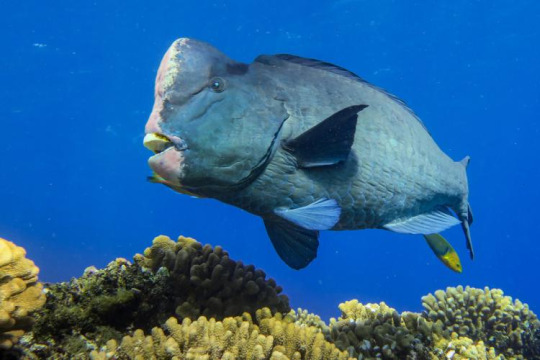
(Image: a green humphead parrotfish (Bolbometopon muricatum) swimming over yellow coral. It is large and mostly a uniform green color, except for the front of its head, which is pink. It has a large, fleshy lump on the top of its head. End ID)
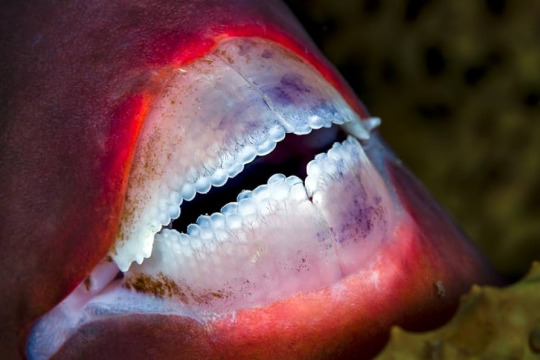
(Image: a close-up of a parrotfish's beak. The top and bottom beaks are divided into two halves, left and right. The beak is bade of small, circular teeth that overlap each other. End ID)
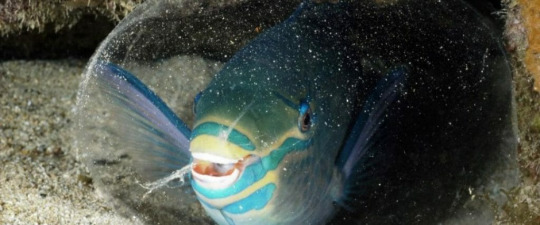
(Image: another common parrotfish seen from the front. It is inside of a mucus cocoon, which appears as a transparent bubble around the fish. Bits of sand dot the cocoon's surface. End ID)
Parrotfish live worldwide, though the majority of species are found in the Indo-Pacific. They live in warm, shallow waters with lots of rocky reefs, especially coral reefs. They use those powerful teeth to eat and what they eat most is algae. There are three main types of feeding behavior: excavating, scraping, and browsing. Excavators bite into rocks to get their food, scrapers crape food off of the surface of the rocks, and browsers go after larger food sources like seagrass and sponges. Some of the larger parrotfish species also make coral a large part of their diet. When they eat, they naturally get rock in their mouths, moreso in excavators. Because their food clings to the rock, spitting the rocks out would deny them food. Instead, parrotfish use pharyngeal teeth set in their throats to grind the rock into sand, which then passes through the digestive tract. When it exists the digestive tract, it is in the form of fine grains of rock. Or to put it another way, parrotfish eat rock and poop sand. A single parrotfish can produce up to 40 kg (88lbs) of sand yearly, and bigger species can produce even more than that. The process of rock being broken down by living things is called bioerosion and parrotfish are one of the most famous sources of bioerosion. The sand they produce can serve as the basis for new growth of coral or other species and helps reinforce nearby islands. In places like Hawai'i, the Caribbean, and the Maldives, it's estimated that up to 80% of the famous white sand is produced by parrotfish and they serve as a major source of incoming earth to support the islands. This makes parrotfish ecosystem engineers. Their eating of algae is also majorly important to their ecosystems. Algae can overgrow and smother delicate ecosystems like coral reefs and seagrass beds and decaying algae draws oxygen out of the water. Parrotfish help the health of their environments by keeping the algae population at healthy levels. Parrotfish also eat seaweeds and sponges that grow much faster than coral and can smother coral reefs. Parrotfish are considered keystone species in many reefs, including the great barrier reef and their population dropping correlates with reduced health of reefs. Damaged reefs tent to have larger parrotfish populations and those populations drop as the reef recovers.

(Image: a group of many parrotfish feeding on coral. They are all the same species and are mostly blue, with yellow heads and stripes on the face. They appear to be biting the the coral. End ID)
Parrotfish are protogynous sequential hermaprodites. This means that all parrotfish are born female and can become male later in life. The transition is usually triggered when there are too many females or not enough males in a location, though in some species any fish that reaches a certain size will become male. Some parrotfish are solitary while others are social. In social species, the social groups consist of a large male and a harem of females that he protects and claims mating rights with. Other males will attempt to fight the male for dominance via headbutting and threat displays and occasionally one of his harem members will become male to challenge him. Males are usually more colorful than females, which they use to woo females, but also puts them at greater risk of predation. If the harem leader dies and is not replaces, one member of the harem will transition to male and replace him. Many species perform courtship dances during nights of the full moon. In non-social species, males will perform displays and fight with each other to attract females. In social species, the dominant male will mate with his harem while smaller males without harems will try to sneakily woo claimed females or sneak in and mate without being noticed. Parrotfish are broadcast spawners. The female releases her eggs into the water and the males releases sperm to fertilize them. The eggs will drift on the current until settling, after which the larvae will hatch. As with most fish species, only a very few of the larvae will reach adulthood.

(Image: a Mediterranean parrotfish (Sparisoma cretense). It is mostly bright red, but with a yellow patch above the tail and a yellow stripe around the eye that runs down to the belly. A large patch behind the eye is blue. End ID)
Thankfully, most parrotfish species are not particularly endangered. The largest threat to them comes from habitat loss as pollution and climate change harms coral reefs. Reintroducing parrotfish to damaged reefs helps them recover. All species are edible, though there is no commercial fishery for them. While parrotfish are capable of delivering powerful bites, there are few reports of humans getting bit. That being said, I found one case where someone had skin on his penis bitten off by a parrotfish. And yes, that link has pictures. Enjoy.

(Image: a blue parrotfish (Scarus coeruleus) looking at the camera. It is a blue fish with darker patches around the eye. Its snout is bulbous and the beak points downward. End ID).
#wet beast wednesday#parrotfish#the smiling grinner#fish#fishblr#fishposting#marine biology#biology#zoology#ecology#animal facts#coral reef#penile trauma#that's a wild tag to have on a post about fish#informative#image described
349 notes
·
View notes
Photo

DECORATIVE PORTRAIT jualmi
One of my decorative portraits for Jualmi
311 notes
·
View notes
Text
underwater

#ut#sans the skeleton#undertale#fanart#sans#sans undertale#undertale sans#water art#underwater#sinking#bubbles#clown fish#coral reef
1K notes
·
View notes
Text
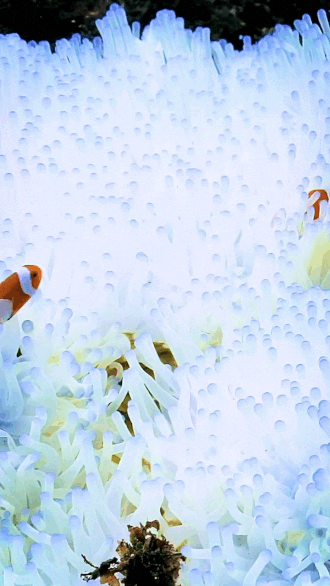
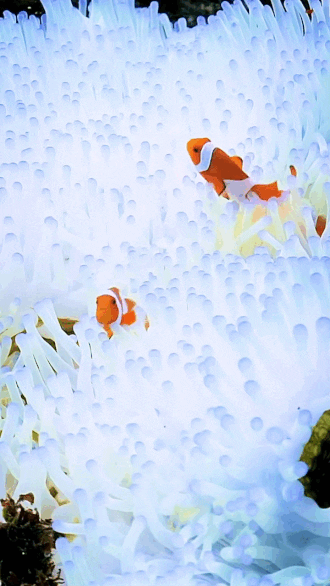
clownfish swimming through bleached anemones | jonoallenphotography on ig
if you have a moment and are mentally able, please read the text accompanying the original instagram post, located at the source link above, and this short article by The National Oceanic and Atmospheric Administration. if not, please just share it around.
it's true this video is strikingly beautiful, but the truth behind it is, in my opinion, necessary for everyone to know.
#stim#clownfish#coral reefs#climate change#sfw#orange#black#white#blue#animals#global warming#marine life#sea creatures#fish#underwater#cnidarians#sea anemones#oceans#coral bleaching#climate change awareness#global warming awareness#ishy gifs#postish
312 notes
·
View notes
Text
Дикий и неприступный: пляж Фронтон. Wild and forbidding: Fronton Beach.








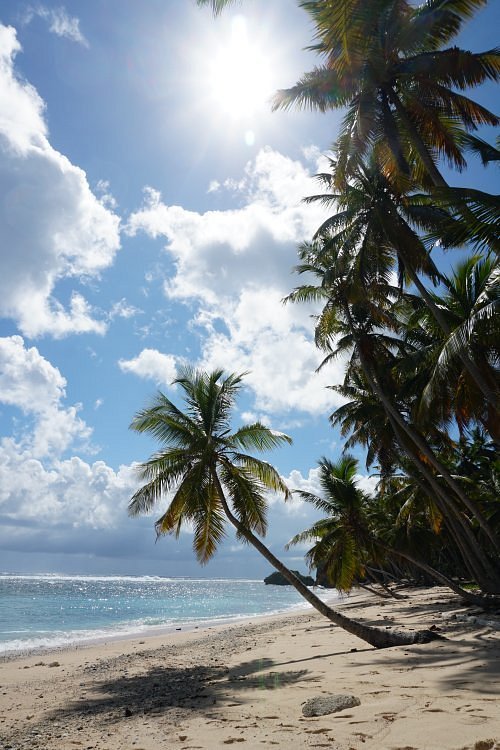


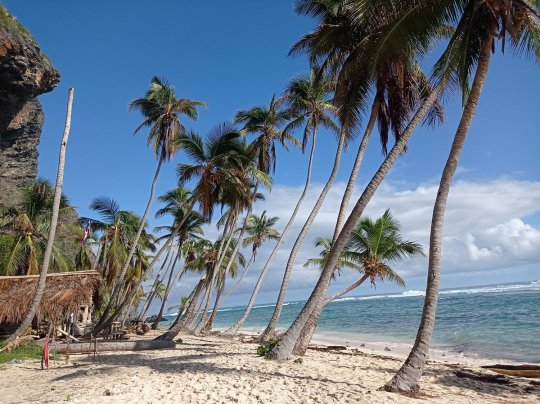





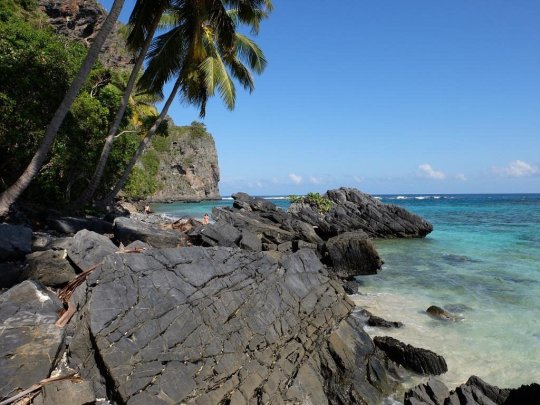
Фронтон - дикий пляж расположенный в 7 километрах от рыбацкого городка Лас Галерас на северо-востоке полуострова Самана, Доминикане. Фронтон порадует ценителей нетронутой природы и отдыха вдали от цивилизации. Со стороны суши пляж окружён тропическим лесом и скалами. Отдельные утёсы достигают 120 метров в высоту. Фронтон – необитаемый уголок Доминиканы. Люди здесь не живут. Зато полно игуан, птиц и подводных обитателей. В многочисленных пещерах также живут летучие мыши.
И хотя пляж Фронтон изолирован от стандартных туристических маршрутов и не располагает привычными удобствами, он продолжает пользоваться спросом. Частыми гостями этого места становятся те, кто хочет заняться дайвингом . Вдоль берега простирается коралловый риф, который и привлекают ныряльщиков. Чистейшая прозрачная вода с максимальной видимостью создает оптический обман. Кажется, что глубина совсем маленькая, а на самом деле в районе пляжа Фронтон идет резкий подводный обрыв. Сразу за коралловым рифом начинается открытый океан и глубина – от 500 метров!
Fronton is a wild beach located 7 kilometers from the fishing town of Las Galeras in the northeast of the Samana Peninsula, Dominican Republic. The pediment will delight connoisseurs of untouched nature and relaxation away from civilization. On the land side, the beach is surrounded by tropical forest and rocks. Some cliffs reach 120 meters in height. Fronton is an uninhabited corner of the Dominican Republic. People don't live here. But it is full of iguanas, birds and underwater inhabitants. Bats also live in numerous caves.
And although Fronton Beach is isolated from standard tourist routes and does not have the usual amenities, it continues to be in demand. Frequent guests of this place are those who want to go diving. A coral reef stretches along the coast, which attracts divers. The purest clear water with maximum visibility creates an optical illusion. It seems that the depth is very shallow, but in fact there is a sharp underwater cliff in the area of Fronton Beach. Immediately behind the coral reef, the open ocean begins and the depth starts from 500 meters!
Источник: /www.tourister.ru/world/america/dominican-republic/city/las-galeras-1/beachs/35011, dzen.ru/a/X-IRBffN_i6JBazJ, /www.tripadvisor.ru/Attraction_Review-g793703-d4476938-Reviews-Playa_Fronton, /idominicana.com/plyazh-fronton/.
#Dominican Republic#nature#nature video#beach#Fronton#tropics#palm trees#rocks#coral reef#marine life#ocean view#ocean#tropical fish#wonderful#nature aesthetic#видео#Доминикана#пляж#Фронтон#природнаякрасота#природа#тропики#скалы#пальмы#океан#кораллы#рыбы
215 notes
·
View notes



